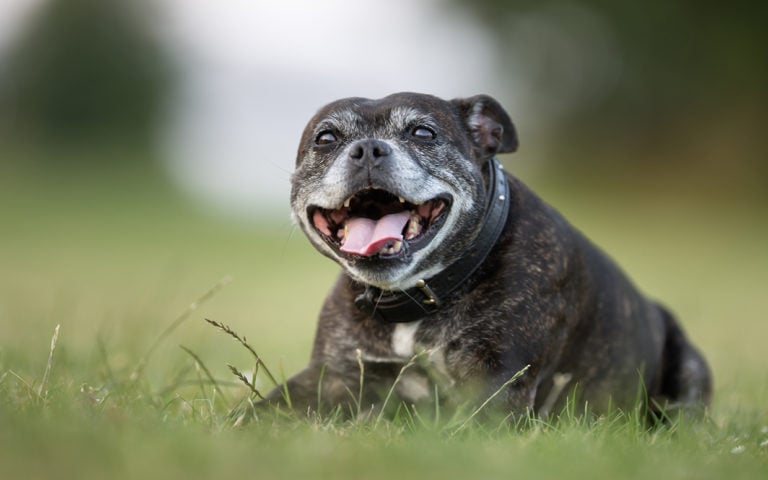What Your Dog’s Stare Reveals About Its Thoughts and Feelings

Sometimes, those eyes say more than a bark ever could. You’re brushing your teeth, and boom—there’s your best friend staring at you without a bark or tail wagging. It’s not awkward or random for them—it’s intentional. Dogs have a lot going on behind that look, and once you start noticing the timing, you’ll see why every stare has a reason.
It Wants Food And Is Asking For It

Those heart eyes could be about lunch. Dogs quickly figure out that staring often gets results, especially when a snack follows. If begging has worked even once, they remember. Over time, a simple look becomes their favorite trick to remind you it’s time for something tasty.
It Wants To Avoid Conflict With That Soft Gaze

In stressful situations, dogs may offer soft or fleeting eye contact, not to connect emotionally but to de-escalate the situation. It’s their way of saying they’re not a threat. This brief gaze helps them stay close to you without triggering conflict or drawing too much attention to their fear.
It Is Curious And Wants To Understand You

A long look from your dog often means pure curiosity. They watch closely when you do something new or unexpected, trying to figure out what you’re thinking or feeling. That stare helps them tune into your mood and intentions, almost like they’re reading a private message meant just for them.
It Is Waiting For A Command And Direction

During training or in unfamiliar situations, that focused stare signals readiness. Working breeds, like Border Collies or Belgian Malinois, often lock eyes to anticipate the next move. The look reflects a state of being “on alert” and ready for instruction as if asking, “What now?”
It Reads Your Facial Expressions And Reacts

Dogs notice more than voices—they study faces to understand what’s really going on. Even the smallest change, like a raised brow or tight smile, can catch their attention. A quiet gaze or head tilt usually follows. These moments are quiet observations, which help your dog read the room without a sound.
It Watches Over You Out Of Protection

Some dogs use eye contact like a quiet check-in during their watchful shifts. Protective breeds tend to stay alert even in stillness, keeping an eye on their surroundings without making a fuss. That intense look while you’re sipping coffee isn’t boredom; it’s a calm form of protection at work.
It Wants To Play And Invites You To Join

Expect those playful eyes when the toy drops at your feet. Canines often stare during moments of excitement to see if you’ll reciprocate. It’s an invitation, not a command. The spark in their eyes? It’s the canine version of saying, “You in, or what?”
It Wants To Bond Through Focused Eye Contact

Eye contact is intimate for dogs. Not something they offer freely to strangers. Locking eyes during calm, everyday moments deepens the sense of trust. A long look can quietly affirm the bond you’ve built. Many four-legged companions do this while being pet or simply resting close by.
It Feels Unwell And Looks To You For Help

When a dog stares more than usual and sticks close, it could mean they’re not feeling right. That quiet eye contact is one of the ways dogs ask for support. They can’t say, “I’m sick,” but they can show it through silent concern.
It Seeks Attention And Tries To Get You To Notice

Sometimes, that unblinking gaze is pure strategy. Whether you’re on the phone or lost in a screen, your furry pal knows how to cut through the noise by locking eyes. It’s their polite, persistent version of “Hey, over here!” Often, a tail wag or soft whine follows right after.
It Shows Submission And Expresses Trust

When dogs glance up softly and hold your look without challenge, it’s a clear sign of trust. Especially in calm moments, this type of eye contact signals deference, not dominance. Canines watch closely as a way of yielding, signaling that they feel safe and respect your leadership.
It Stares At You To Feel Safe And Connected

In unfamiliar places or crowded rooms, a dog might stare just to anchor itself. Eye contact helps them feel secure, like a visual tether back to their person. If the environment changes suddenly, your eyes are their compass. One glance can mean everything’s okay.
It Senses Your Mood And Adjusts Its Behavior

Dogs notice changes in your mood quickly. They’re great at reading your energy, and when your body language feels different, they’ll look you in the eyes to understand better. This eye contact helps them respond—they might calm down if you seem stressed or come closer if you’re feeling low.
It Watches You To Predict What Happens Next

Dogs often fixate on their humans to gather information. That steady gaze means they’re reading your body language and habits to figure out what’s about to unfold. Whether it’s mealtime or a walk, they know your patterns and look for signs that something relevant is coming.
It Is Processing A Sound And Looking For Your Reaction

When a strange noise echoes through the house, your dog might freeze and lock eyes with you. They’re checking in—was that okay? Are you alarmed? That stare is part of their internal radar system, using your face to decide if they should stay calm or prepare to bark.




